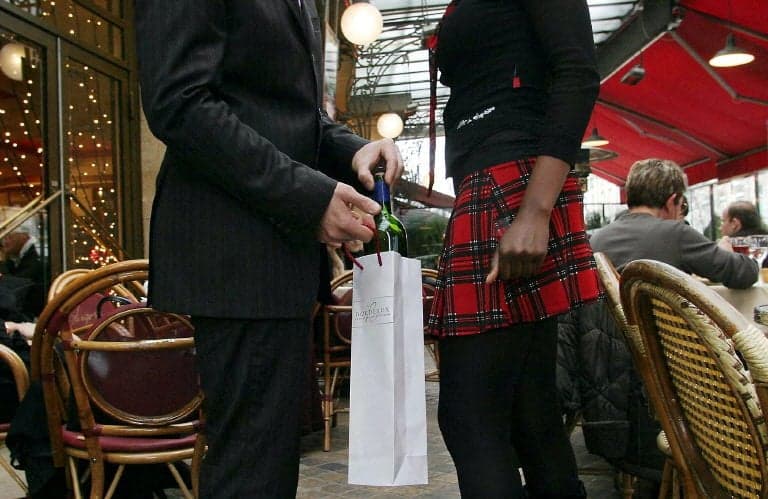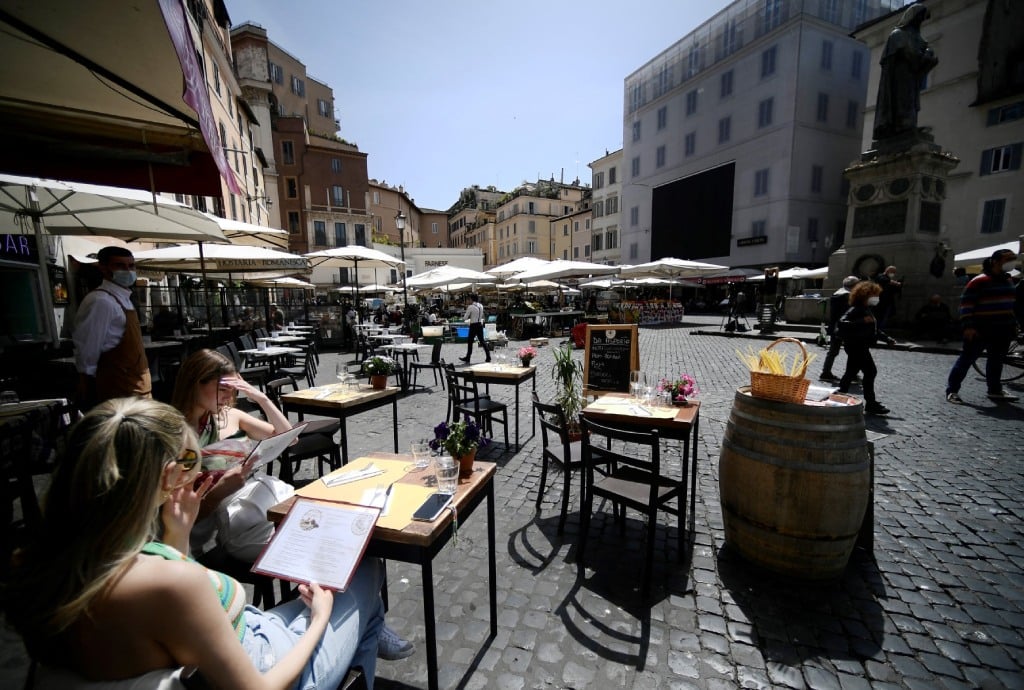Are doggy bags still a taboo in Italy's restaurants?

As controversy rages over a proposed ‘doggy bag’ law for Italian restaurants, why is taking leftovers home frowned upon in Italy and are things changing?
Italy has plenty of unwritten rules revolving around food, and most Italians don’t take affronts to their culinary and dining traditions lightly.
But after famed Neapolitan pizzaiolo Gino Sorbillo added pineapple pizza to his menu last week, another food-related taboo has been brought into question in recent days; namely Italians’ traditional hostility towards the idea of taking restaurant leftovers home, including unfinished bottles of wine.
The topic has been in the news after lawmakers proposed a bill requiring restaurants in Italy to provide takeout containers (in which they used the English term ‘doggy bag’), presenting it as a bid to reduce food waste.
The law would follow in the footsteps of similar pieces of legislation already in place in France and Spain, where bars and restaurants have for years been required to offer customers the option of taking food leftovers away with them.
But, as debates on whether or not it is acceptable to take a portion of rigatoni home from the local trattoria continue in Italy, you may wonder why this is even being discussed, especially as the practice has long been commonplace in other European countries as well the US and UK.

Customers have lunch at a restaurant in Campo dei Fiori in downtown Rome in April 2021. Photo by Filippo MONTEFORTE / AFP
The general consensus is that the issue boils down to fare una bella figura (‘making a good impression’), and particularly the idea that taking leftovers home from the restaurant may be seen as a sign of limited financial means or excessive attachment to money.
This was confirmed by a 2015 survey that found that one in four Italians believed the idea of carrying the remnants of their favourite dishes back home was a sign of poverty, bad manners and even vulgarity, with only 25 percent of respondents admitting they were comfortable asking for a doggy bag.
READ ALSO: What are the rules on tipping in Italy?
But, 15 years after Michelle Obama and her daughters stunned the country by walking out of a popular Rome restaurant holding a doggy bag, there are early signs that Italians (or at least some of them) may be changing their stance on the controversial takeaway box.
Four in ten Italians are now comfortable taking restaurant leftovers, with ‘only’ 12 percent of respondents saying that it’s vulgar or a sign of poverty, according to a survey from farmers’ association Coldiretti.
A recent survey by the Waste Watcher International Observatory, cited by Ansa, meanwhile found that nearly one in two Italians thinks that restaurants should offer doggy bags, with one in four saying that they would appreciate culinary advice on how to cook or reuse leftovers at home.
And while customers seem to be slowly adapting to the idea of taking food home after eating out, many restaurants have already embraced the idea that providing doggy bags on request may soon be mandatory.
READ ALSO: 'A rip-off': Should you really get mad about Italy’s table charge?
Award-winning pizzaiolo Franco Pepe described the ‘doggy bag bill’ as the “ideal proposal”, while Michelin-star chef Ada Stefani said she regarded mandatory takeaway boxes as “a necessary investment” to tackle waste.
But amid the favourable voices, some remained doubtful or even critical of the proposed bill.
For instance, journalist Giuseppe Cruciani on Thursday described the law proposal as a "shambles", saying that taking food home was “very vulgar”.
What do you think - are attitudes changing in Italian restaurants? Have you ever encountered problems when asking to take food or drink home? Let us know in the comments section below.
Comments (7)
See Also
Italy has plenty of unwritten rules revolving around food, and most Italians don’t take affronts to their culinary and dining traditions lightly.
But after famed Neapolitan pizzaiolo Gino Sorbillo added pineapple pizza to his menu last week, another food-related taboo has been brought into question in recent days; namely Italians’ traditional hostility towards the idea of taking restaurant leftovers home, including unfinished bottles of wine.
The topic has been in the news after lawmakers proposed a bill requiring restaurants in Italy to provide takeout containers (in which they used the English term ‘doggy bag’), presenting it as a bid to reduce food waste.
The law would follow in the footsteps of similar pieces of legislation already in place in France and Spain, where bars and restaurants have for years been required to offer customers the option of taking food leftovers away with them.
But, as debates on whether or not it is acceptable to take a portion of rigatoni home from the local trattoria continue in Italy, you may wonder why this is even being discussed, especially as the practice has long been commonplace in other European countries as well the US and UK.

The general consensus is that the issue boils down to fare una bella figura (‘making a good impression’), and particularly the idea that taking leftovers home from the restaurant may be seen as a sign of limited financial means or excessive attachment to money.
This was confirmed by a 2015 survey that found that one in four Italians believed the idea of carrying the remnants of their favourite dishes back home was a sign of poverty, bad manners and even vulgarity, with only 25 percent of respondents admitting they were comfortable asking for a doggy bag.
READ ALSO: What are the rules on tipping in Italy?
But, 15 years after Michelle Obama and her daughters stunned the country by walking out of a popular Rome restaurant holding a doggy bag, there are early signs that Italians (or at least some of them) may be changing their stance on the controversial takeaway box.
Four in ten Italians are now comfortable taking restaurant leftovers, with ‘only’ 12 percent of respondents saying that it’s vulgar or a sign of poverty, according to a survey from farmers’ association Coldiretti.
A recent survey by the Waste Watcher International Observatory, cited by Ansa, meanwhile found that nearly one in two Italians thinks that restaurants should offer doggy bags, with one in four saying that they would appreciate culinary advice on how to cook or reuse leftovers at home.
And while customers seem to be slowly adapting to the idea of taking food home after eating out, many restaurants have already embraced the idea that providing doggy bags on request may soon be mandatory.
READ ALSO: 'A rip-off': Should you really get mad about Italy’s table charge?
Award-winning pizzaiolo Franco Pepe described the ‘doggy bag bill’ as the “ideal proposal”, while Michelin-star chef Ada Stefani said she regarded mandatory takeaway boxes as “a necessary investment” to tackle waste.
But amid the favourable voices, some remained doubtful or even critical of the proposed bill.
For instance, journalist Giuseppe Cruciani on Thursday described the law proposal as a "shambles", saying that taking food home was “very vulgar”.
What do you think - are attitudes changing in Italian restaurants? Have you ever encountered problems when asking to take food or drink home? Let us know in the comments section below.
Join the conversation in our comments section below. Share your own views and experience and if you have a question or suggestion for our journalists then email us at [email protected].
Please keep comments civil, constructive and on topic – and make sure to read our terms of use before getting involved.
Please log in here to leave a comment.